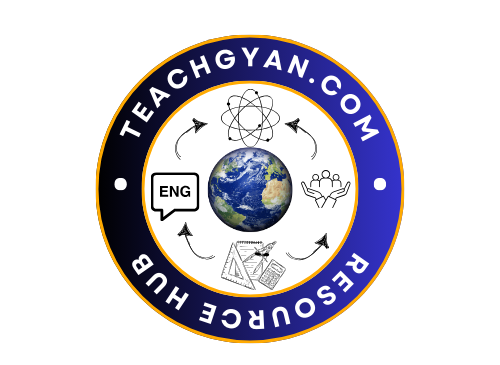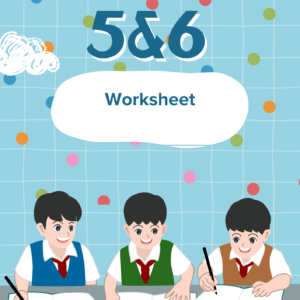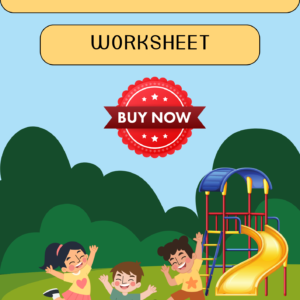Writing and City Life[expand title=”Read More➔” swaptitle=”🠔Read Less”]
Subject: History
Class: 11
Chapter: Writing and City Life
Objectives:
- Knowledge: Students will understand the significance of writing in ancient civilizations and its role in the development of city life.
- Skills: Students will analyze pictures to infer information about ancient cities.
- Application: Students will engage in a hands-on activity to create a simple form of ancient writing.
Learning Outcomes:
- Students will be able to explain the connection between the development of writing systems and the growth of ancient cities.
- Students will be able to analyze and interpret visual information from pictures of ancient cities.
- Students will be able to create a basic form of ancient writing and understand its importance.
Materials Needed:
- Whiteboard and markers
- Projector for displaying pictures
- Pictures of ancient cities (e.g., Mohenjo-Daro, Ur, etc.)
- Chart papers
- Colored markers
- Clay or soft modeling dough
- Printouts of simple ancient writing symbols (e.g., cuneiform, hieroglyphs)
Duration: 60 minutes
Lesson Plan:
Engage (15 minutes):
Introduction to Writing and City Life (5 minutes):
- Briefly introduce the connection between the development of writing systems and the growth of ancient cities.
- Use a mind map on the whiteboard to illustrate key concepts.
Picture Analysis (10 minutes):
- Display pictures of ancient cities on the projector.
- Ask students to observe and note down characteristics of these cities.
- Facilitate a class discussion on the observations.
Explore (20 minutes):
Hands-on Activity (15 minutes):
- Divide the class into small groups.
- Provide each group with clay or modeling dough.
- Instruct them to create a miniature model of an ancient city based on their understanding from the pictures.
Discussion (5 minutes):
- Groups present their models.
- Discuss common features and differences in the models.
Explain (15 minutes):
Writing in Ancient Civilizations (10 minutes):
- Discuss the role of writing in the organization and development of ancient cities.
- Use a timeline on the whiteboard to show the progression of writing systems.
Introduction to Ancient Writing (5 minutes):
- Introduce students to simple forms of ancient writing (cuneiform, hieroglyphs).
- Distribute printouts and briefly explain each.
Elaborate (5 minutes):
- Group Activity (5 minutes):
- Ask each group to choose a symbol and create a simple message using it.
- Share messages with the class.
Evaluate (5 minutes):
- Reflection (5 minutes):
- Conclude the lesson with a reflection session.
- Ask students to discuss what they learned about writing and city life.
Homework Assignment:
Write a short essay (300 words) on the role of writing in the development of ancient civilizations, citing specific examples.
This lesson plan aims to engage students through visual stimuli, hands-on activities, and interactive discussions, fostering a deeper understanding of the connection between writing and city life in ancient civilizations.[/expand]
An Empire across
Three Continents[expand title=”Read More➔” swaptitle=”🠔Read Less”]
Subject: History
Chapter: An Empire across Three Continents
Objectives:
Cognitive Objective:
- Students will understand the historical context of the selected empire.
- Students will analyze the geographical scope and impact of the empire on three continents.
Affective Objective:
- Students will appreciate the cultural diversity and exchanges facilitated by the empire.
- Students will recognize the importance of cross-cultural interactions in shaping historical developments.
Materials:
- Pictures/maps of the empire at its height.
- Historical documents related to the empire.
- Activity sheets for group work.
- Whiteboard and markers.
- Laptops/tablets for online research.
Duration: 2 class periods (45 minutes each)
5E Lesson Plan:
1. Engage (15 mins):
- Start with a picture of the empire at its height. Ask students what they observe and what questions arise from the image.
- Introduce the lesson with a short video clip or a brief narrative, setting the historical context.
2. Explore (20 mins):
- Divide the students into small groups and provide each group with a set of historical documents related to the empire.
- Instruct them to analyze the documents and extract information about the empire’s impact on different continents.
- Encourage discussions within groups.
3. Explain (15 mins):
- Bring the class back together and facilitate a discussion based on the group findings.
- Provide additional information to fill gaps and clarify concepts.
- Use a timeline to help students visualize the chronological development of the empire.
4. Elaborate (25 mins):
- Assign a research task: Each group explores a specific aspect (e.g., trade, cultural exchanges) of the empire.
- Groups create visual representations (charts, diagrams) to present their findings.
- Encourage creativity and critical thinking.
5. Evaluate (15 mins):
- Each group presents their findings, and the class engages in a Q&A session.
- Assess understanding through a short quiz or reflective writing on the significance of the empire.
- Provide feedback on both content and presentation skills.
Homework:
- Assign a reflective essay where students connect the historical events discussed in class to contemporary global interactions.
Assessment:
- Formative assessment during group work.
- Summative assessment through the group presentations and individual reflections.
This lesson plan aims to engage students actively, foster collaboration, and deepen their understanding of the historical empire across three continents.[/expand]
NOMADIC EMPIRES[expand title=”Read More➔” swaptitle=”🠔Read Less”]
Subject: History
Class: 11
Chapter: Nomadic Empires
Objective:
- Knowledge Objective:
- Students will understand the rise and characteristics of nomadic empires.
- Skill Objective:
- Students will be able to analyze the impact of nomadic empires on settled societies.
Engage (10 minutes):
- Activity: “Guess the Empire”
- Show pictures of different nomadic empires on slides.
- Students discuss in pairs and try to guess the empire based on visual clues.
- Lead a class discussion on their guesses and initial impressions.
Explore (15 minutes):
- Activity: “Mapping Nomadic Migrations”
- Provide maps of different nomadic empires’ migrations.
- In groups, students trace and analyze the paths of these migrations.
- Discuss the reasons for nomadic migrations and their impact on neighboring regions.
Explain (20 minutes):
- Lecture and Discussion: “Characteristics of Nomadic Empires”
- Provide a brief lecture on the common characteristics of nomadic empires.
- Discuss key figures, events, and societal structures.
- Use visuals and historical artifacts to enhance understanding.
Elaborate (20 minutes):
- Group Project: “Nomadic Empire Showcase”
- Divide the class into small groups.
- Each group researches a specific nomadic empire in-depth.
- They create a visual presentation or poster highlighting key aspects.
- Groups present their findings to the class, encouraging questions and discussions.
Evaluate (15 minutes):
- Assessment: “Reflection and Debate”
- Ask students to individually write a reflection on the impact of nomadic empires on settled societies.
- Organize a class debate on the positive and negative effects of nomadic empires, with students using evidence from the lesson.
Homework:
- Research Assignment: “Legacy of Nomadic Empires”
- Assign readings or online research on how the legacy of nomadic empires can be observed in modern societies.
- Students prepare short presentations for the next class.
Additional Notes:
Integration of Technology:
- Use visuals, maps, and historical documentaries to enhance engagement.
- Encourage the use of online resources for research.
Differentiation:
- Provide additional resources for advanced learners.
- Offer support for students who may need extra help with the content.
This lesson plan aims to actively engage students in understanding nomadic empires, promoting critical thinking and collaborative skills. It aligns with the CBSE curriculum for Class 11 History.[/expand]
The Three Orders[expand title=”Read More➔” swaptitle=”🠔Read Less”]
Subject: History
Class: 11 CBSE
Chapter: The Three Orders
Duration: 60 minutes
Objectives:
Knowledge:
- Understand the concept of the Three Orders in medieval society.
- Identify and differentiate between the clergy, nobility, and peasantry.
Skills:
- Analyze visual representations to extract historical information.
- Collaborate in small groups for better comprehension.
Learning Outcomes:
By the end of the lesson, students will be able to:
- Explain the social structure of medieval society.
- Recognize the roles of the clergy, nobility, and peasantry.
- Analyze visual representations of the Three Orders.
- Collaborate effectively with peers.
5E Lesson Plan:
1. Engage (10 minutes):
- Activity: Show pictures representing the clergy, nobility, and peasantry in medieval times.
- Objective: Capture students’ attention and encourage discussion on initial perceptions.
2. Explore (15 minutes):
- Activity: Divide students into small groups. Each group receives a set of pictures related to one order. Discuss what they observe and make initial predictions.
- Objective: Encourage collaborative learning and stimulate curiosity.
3. Explain (15 minutes):
- Activity: Present a brief lecture explaining the Three Orders, their roles, and interactions.
- Objective: Provide a solid understanding of the concept.
4. Elaborate (10 minutes):
- Activity: Each group creates a visual representation (e.g., a poster or diagram) of the Three Orders. They should include key characteristics and interactions.
- Objective: Promote creativity and reinforce understanding.
5. Evaluate (10 minutes):
- Activity: Groups present their visual representations to the class. After each presentation, open the floor for questions and discussion.
- Objective: Assess comprehension and provide feedback.
Homework:
- Write a short paragraph reflecting on the significance of the Three Orders in shaping medieval society.
Assessment:
- Participation in group activities.
- Quality of the visual representation.
- Understanding demonstrated during the group presentations.
Resources:
- Pictures representing the Three Orders.
- Whiteboard and markers.
- Chart papers and art supplies.
This lesson plan combines visual stimuli, collaborative activities, and individual reflections to cater to various learning styles and engage students in the exploration of medieval society.[/expand]
Changing Cultural
Traditions[expand title=”Read More➔” swaptitle=”🠔Read Less”]
Class: 11
Subject: History
Chapter: Changing Cultural Traditions
Objectives:
Knowledge:
- Understand the concept of changing cultural traditions.
- Identify key factors influencing cultural changes.
Skills:
- Analyze historical sources to trace cultural transformations.
- Communicate effectively through discussions and presentations.
Values:
- Appreciate diverse cultural perspectives.
- Develop critical thinking skills.
Materials:
- Pictures representing different cultural traditions.
- Historical documents and artifacts.
- Whiteboard and markers.
- Projector and screen.
- Chart paper and markers.
Time: 60 minutes
5E Lesson Plan:
1. Engagement (10 minutes):
Introduction:
- Start with a thought-provoking question: “How do cultures evolve over time?”
- Show pictures representing different cultural traditions and ask students to share their thoughts on what they observe.
Activity:
- Conduct a quick group discussion on the impact of external influences on cultural traditions.
2. Exploration (15 minutes):
Activity:
- Divide students into groups and provide each group with a set of historical documents and artifacts.
- Ask them to analyze the materials and identify elements that reflect changing cultural traditions.
Discussion:
- Facilitate a class discussion based on their findings.
- Encourage students to consider the causes and consequences of cultural changes.
3. Explanation (10 minutes):
Concept Introduction:
- Provide a brief lecture on the factors influencing changing cultural traditions, including technological advancements, globalization, and societal shifts.
- Discuss the importance of understanding cultural changes in a historical context.
Q&A Session:
- Encourage students to ask questions and seek clarification on the concepts discussed.
4. Elaboration (15 minutes):
Activity:
- Ask each group to create a chart or presentation illustrating how a specific cultural tradition has changed over time.
- Include key factors and events contributing to the change.
Group Presentation:
- Allow each group to present their findings to the class.
- Encourage questions and discussions after each presentation.
5. Evaluation (10 minutes):
Assessment:
- Provide a written assignment where students analyze a primary source related to changing cultural traditions.
- Assess their understanding through a rubric focusing on analysis, critical thinking, and communication skills.
Closure:
- Summarize the key points of the lesson.
- Assign reading or research for the next class related to the ongoing topic.
Homework:
- Assign a reading related to the chapter “Changing Cultural Traditions” for further exploration.
Note:
- Adapt the activities based on the availability of resources and the specific needs of the students.[/expand]
Displacing
Indigenous People[expand title=”Read More➔” swaptitle=”🠔Read Less”]
Class: 11th CBSE
Subject: History
Chapter: Displacing Indigenous People
Objective:
- Knowledge: Understand the historical context and reasons behind the displacement of indigenous people.
- Skills: Develop critical thinking skills through the analysis of pictures and primary sources.
- Application: Relate historical events to contemporary issues related to indigenous rights.
Learning Outcomes:
Students will be able to:
- Describe the main reasons for the displacement of indigenous people.
- Analyze pictures and primary sources to understand the impact of displacement on indigenous communities.
- Discuss the contemporary relevance of the displacement of indigenous people.
Materials Needed:
- Whiteboard and markers
- Projector for displaying pictures
- Printed pictures depicting historical events of indigenous displacement
- Primary source documents (if available)
- Worksheets for group activities
- Reference books on indigenous history
Time: 60 minutes
5E Method:
1. Engage (10 minutes):
- Start with a brief discussion on the term ‘indigenous people’ and ask students what they already know about the historical displacement of indigenous communities.
- Show a map highlighting regions where indigenous displacement occurred.
2. Explore (15 minutes):
- Display pictures depicting historical events related to indigenous displacement.
- In groups, have students analyze the pictures and discuss the possible reasons behind the displacement. Provide guiding questions.
- Introduce primary sources related to displacement (letters, reports, etc.) and discuss their historical context.
3. Explain (15 minutes):
- Summarize key points from the group discussions.
- Provide additional information on the historical context, policies, and events that led to the displacement of indigenous people.
- Discuss the consequences of displacement on indigenous communities.
4. Elaborate (10 minutes):
- In groups, assign students a contemporary issue related to indigenous rights (land rights, cultural preservation, etc.).
- Have them discuss how historical displacement influences these issues today.
5. Evaluate (10 minutes):
- Conclude with a class discussion on the impact of displacement and its long-term consequences.
- Assign a short essay or presentation on the contemporary issues discussed in the elaborate stage.
Homework:
Prepare a short essay or presentation on the impact of displacement on indigenous communities, drawing connections between historical events and contemporary issues.
Assessment:
- Participation in group activities and discussions.
- Analysis of pictures and primary sources.
- Quality of the essay or presentation.
Note:
Adapt the activities and content based on the availability of resources and the specific curriculum of the school.[/expand]
Paths to
Modernization[expand title=”Read More➔” swaptitle=”🠔Read Less”]
Class: XI
Subject: History
Chapter: Paths to Modernization
Objective:
- Students will understand the different paths to modernization taken by various societies.
- Students will analyze and compare visual representations of modernization processes.
- Students will engage in group activities to discuss and present their understanding of the topic.
Learning Outcomes:
- Knowledge: Understand the various paths taken by different societies towards modernization.
- Comprehension: Analyze visual representations and relate them to historical contexts.
- Application: Apply knowledge gained to discuss and present modernization paths in group activities.
- Analysis: Compare and contrast different paths to modernization.
- Evaluation: Assess the impact of modernization on societies.
5E Lesson Plan:
1. Engage (Time: 10 minutes):
- Begin with a brief discussion on the meaning of modernization.
- Show a set of historical pictures representing different aspects of modernization (e.g., industrialization, urbanization, cultural changes).
- Ask open-ended questions to stimulate students’ curiosity, such as “What changes do you observe in these pictures?”
2. Explore (Time: 15 minutes):
- Provide students with readings or videos highlighting different paths to modernization (e.g., Western industrialization, Meiji Restoration in Japan, Ottoman reforms).
- Divide the class into small groups and assign each group a specific path to modernization.
- In their groups, students discuss and list key features of the assigned modernization path.
3. Explain (Time: 20 minutes):
- Each group presents its findings to the class, highlighting key features and the impact of the chosen path to modernization.
- Use a comparative approach to discuss similarities and differences among the paths.
4. Elaborate (Time: 20 minutes):
- Provide additional resources (text, images, videos) for further exploration.
- Assign students a short research project to delve deeper into one specific aspect of a modernization path.
- Students create a visual representation or infographic summarizing their research.
5. Evaluate (Time: 15 minutes):
- Conclude the lesson with a class discussion on the significance of understanding various paths to modernization.
- Assign a short reflective essay or journal entry where students express their views on which modernization path they find most intriguing and why.
Assessment:
- Formative Assessment: Observations during group activities, presentations, and class discussions.
- Summative Assessment: Evaluation of the research project and the reflective essay.
Additional Notes:
- Ensure that resources used (pictures, videos, readings) are age-appropriate and aligned with the CBSE curriculum.
- Encourage active participation and critical thinking during discussions and activities.
- Foster a collaborative learning environment where students can share their perspectives and learn from each other.[/expand]





